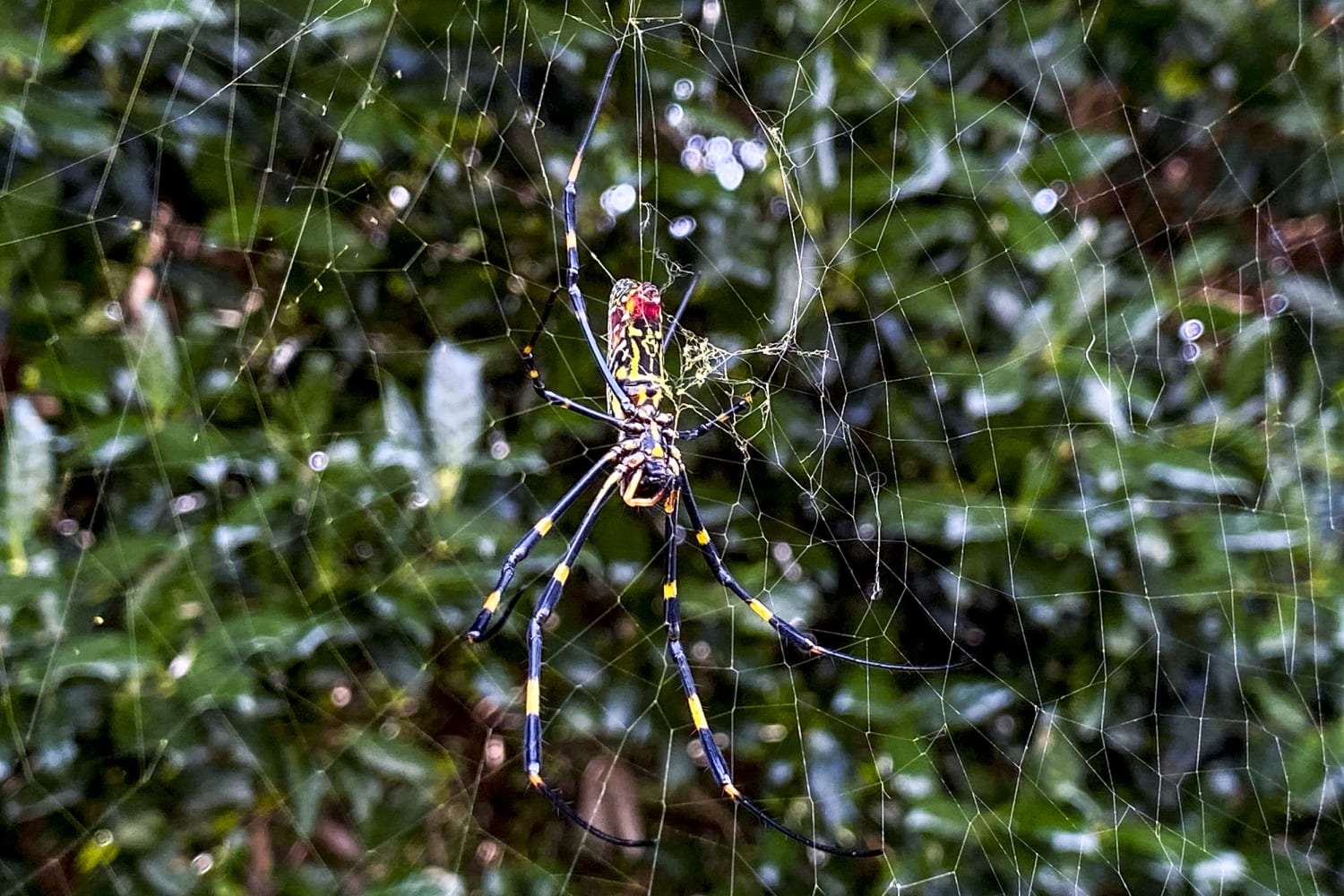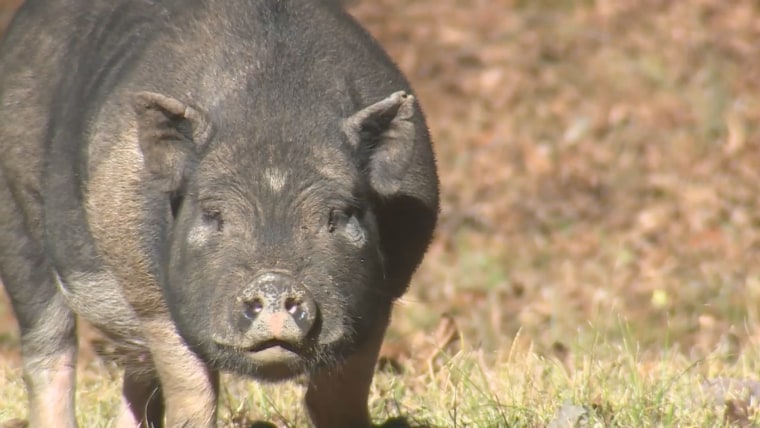The Atlantic Coast states may soon be receiving millions of uninvited guests. A Japanese arthropod known as the joro spider has colonized Georgia, and new research finds that it could survive and possibly spread across the East Coast — and even into Canada — in a matter of months. If and when they arrive, they’ll be hard to miss. They are bright yellow, blue and red, can grow to 3 inches wide and can weave webs that are 10 feet deep.
They can still be a nuisance. Just ask entomologist Will Hudson, whose front porch couldn’t be used after he found joro webs 10 feet deep stretching across it.
We don’t know exactly how joro spiders arrived here, but they were first spotted in Georgia in 2014 and have already spread to Tennessee, North Carolina and South Carolina. The spiders can use their own silk to float to new locations, and they are also very capable of catching a ride with unsuspecting humans. One spider researcher accidentally brought one along from Georgia to Oklahoma.
“Invasion of the Giant Neon Joro Spiders!” would make a great title for a 1950s horror film, especially since the name joro spider comes from the mythical Japanese Jorogumo, giant spiders that shapeshift into beautiful women to kill and eat young men. But you shouldn’t worry too much about the arachnids that might be coming to a neighborhood near you. Joro spiders frighten some people and are nonnative to the United States (technically speaking, that makes them invasive), but not every nonnative species is a problem. Joro spiders aren’t dangerous to humans, and they don’t appear to be harmful to the environment or the economy. They may even do some good.
The problematic invasive species are the ones that are nonnative and cause harm, often because of a lack of predators to control their numbers. Sometimes they are introduced intentionally by people, and sometimes they hitch a ride with us or spread on their own. Whatever their methods, they’re estimated to have caused $1.288 trillion in damages around the world between 1970 and 2020, an amount that continues to rise.
Some invasive species damage ecosystems, like kudzu, a plant that is able to grow a foot a day and outcompete many native plants. Some pose a risk to human health, like Africanized honeybees, which are more aggressive than other bees. Some harm the economy, like zebra mussels that completely clog pipes. And some invasive species can do all three, such as feral pigs.
But many species that arrive in new places don’t harm ecosystems, human health or the economy. For one thing, most organisms that find themselves somewhere far from home probably can’t establish a foothold in the first place. Most organisms live where they do because millions of years of evolution have led them to be well-adapted to that place. Crocodiles and alligators, for instance, can easily ambush prey on a riverbank but are terrible at chasing down gazelles on the savanna, surprising seals on ice sheets or (contrary to urban legend,) swimming through the sewers of New York City.
Even when a nonnative species is able to successfully take up residence, it doesn’t automatically become harmfully invasive. Think of the crops that farmers grow in the U.S. Many major crops such as wheat, apples and rice aren’t native to North America, but they can be grown without spreading out of farms and causing significant disruptions elsewhere.
Joro spiders appear to be in this category. Much of the U.S. has a climate similar to Japan’s, which is one of the reasons it’s possible that joro spiders could make their way out of Georgia up the East Coast. And while they do eat (and are likely eaten by) native species, joro spiders don’t seem to cause problems for ecosystems or the economy.
However, they can still be a nuisance. Just ask entomologist Will Hudson, whose front porch couldn’t be used after he found joro webs 10 feet deep stretching across it. That’s why study authors Andrew Davis and Benjamin Frick of the University of Georgia call it an invasive species even though it doesn’t cause any known major problems.
But it’s possible that for all their icky connotations, joro spiders might actually be a welcome addition to North America. They could be useful in controlling the populations of much more harmful invasive species. Invasive brown marmorated stink bugs, for instance, have been found in 47 states and are capable of wiping out entire crops of corn, peppers, tomatoes, apples and peaches. Many spiders don’t eat stink bugs, but joro spiders do.
We still need more research to be absolutely sure that joro spiders are as benign as they seem, however. Sometimes animals that prey on problematic pests become huge pests in their own right.
Either way, while arachnophobes are loath to deal with yet another species of spider, they should take comfort in the ecologically important role they play eating other creepy crawlies. It’s hard to estimate how many bugs an individual spider consumes, but all the spiders in the world might eat up to 880 million tons of insects a year, which is double the amount of meat and fish that all the humans in the world eat annually. One encounter with a spider could save you dozens of encounters with other arthropods.
To borrow from Blue Öyster Cult, don’t fear the spider.
Source: | This article originally belongs to Nbcnews.com











